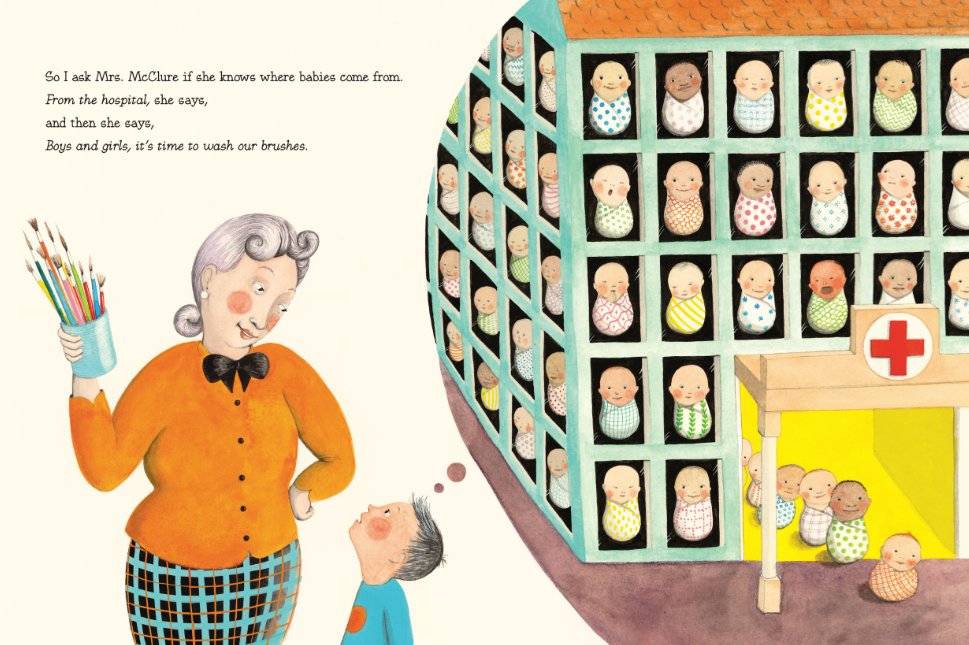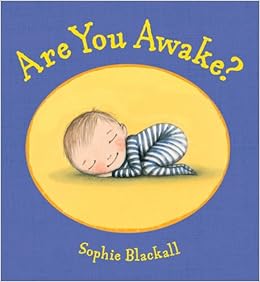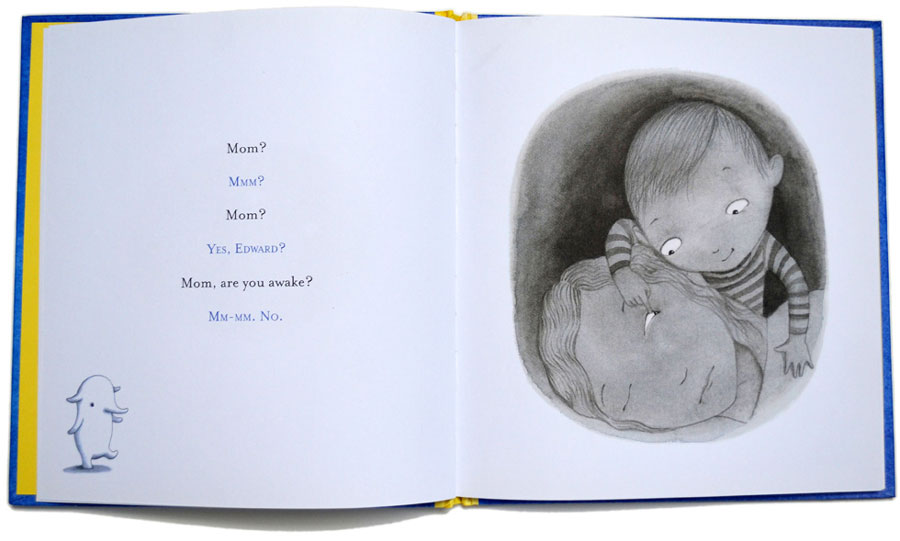A Brief Bio
Sophie
Blackall was born in Australia in 1970. She learned how to draw on Australian
beaches with sticks. She has a Bachelor’s in Design and has had many galleries
of her work in both Sydney and Melbourne. But in 2000, she was drawn to New
York, where she has remained ever since. Her work has appeared in several
newspapers such as the New York Times, the Boston Globe, and the Wall Street
Journal. Since coming to New York, she has illustrated over 30 children’s
books. Her children’s books include: 2015 Caldecott Medal Winner Finding Winnie, Ezra Jack Keats
Award-winning Ruby’s Wish, and A Fine Dessert, which has since garnered
much controversy.
Sophie Blackall Exhibition Video
Winning
the Caldecott
An Annotated Bibliography
Mattick,
Lindsay. Finding Winnie: The True Story of the World’s Most Famous Bear. Illustrated
by Sophie Blackall. Little Brown and Company. 2015. 56 pages. Ages 3-6.
It’s
bedtime and just like any young child, Cole wants to hear a story. Cole’s mama
begins her tale – a true story about a veterinarian named Harry who is headed
to Europe to fight in World War I. Along his way, he stumbles upon a black bear
cub at the train station and thinks, “There’s something special about that
bear.” So begins Harry’s adventures with Winnie, who soon becomes the army’s
mascot and has a job of her own. Sophie Blackall’s illustrations bring Winnie
and her story to life, often making the reader laugh. She portrays the setting
perfectly right down to the buttons on the uniforms and the ships the soldiers
take across the ocean. When the army is to be shipped off to France, Harry has
to decide how to keep Winnie safe. Lindsay Mattick paints images with her
words: “The trained rolled right through dinner and over the sunset and around
ten o’clock and into a nap and out the next day,” effortlessly tugging the
reader along word for word. The bedtime story format not only blends the two
separate stories together, but also allows time for young listeners to ask
questions of their own, just as Little Cole does. The London Zoo is where
Christopher Robin first meets Winnie, and he too knows, “there’s something
special about that bear.” The young boy names his teddy bear after the real
Winnie and the rest is history. An album at the end of the story shows actual
photographs of Harry and Winnie that will awe fans of Winnie the Pooh or anyone
who loves animals. There has been no better telling of the true story of how
Winnie the Pooh came to be.
Jenkins, Emily. A
Fine Dessert: Four Centuries, Four Families, One Delicious Treat. Illustrated
by Sophie Blackall. Schwartz & Wade Books. 2015. 44 pages.
Many
of us may recognize Sophie Blackall’s art instantly when we look at A Fine
Dessert. Her work has been in popular children’s books like Ivy and Bean
and this year’s Caldecott Award Winner, Finding WInnie. If you are
familiar with her art, you know that she does extensive research before
illustrating a book. The book tells the story of a dessert through the
centuries. For example, the first story takes place three hundred years ago and
begins with a woman and her daughter picking blackberries. The woman milks the
cow and then beats it into whipped cream. The girl prepares the berries with
water from the well and mixes it with the cream. They leave it to chill in an
ice pit in a hillside and later serve it for supper. The second story is more
troubling. It begins two hundred years ago and features two slaves, a girl and
her mother, picking berries and preparing the dessert for their masters. The
first picture shows the girl and her mother smiling at each other as they pick
berries. Another picture shows the girl beating the cream - the first image she
is smiling, the second she is frowning because her arm aches and in the third
she has a big grin. A couple pages later, the girl and her mother serve their
masters the fine dessert. The last image in this story is the most disturbing
as are the words - “later, the girl and her mother hid in the closet and licked
the bowl clean together,” (Jenkins, p. 16). The next story takes place only one
hundred years ago and features a white girl and her mother making the same
dessert in more modern times. Again, the women are doing all of the work. The
last story has a very different tone. It takes place only a couple of years ago
and features a father and his son making the dessert. The last image in this
sequence shows a gathering of friends and family of different racial
backgrounds and ages, all enjoying this fine dessert.
Though the last story and
picture is uplifting, we can’t ignore the second story. While we understand the
author did not want to skip over this period in our history, we feel that the
story grossly oversimplified slavery. There is no mention of slaves or slavery
besides the word “master.” Imagine a child confronting slavery for the first
time in this book. The story makes it seem like it wasn’t a big deal.
Furthermore, we were uncomfortable with all of the smiling between the mother
and girl while they were preparing food for their master. While slaves may have
tried to find joy in parts of their work, including these smiles here with no
context is inappropriate. The last image in this sequence is mind-boggling. It
shows the slave girl and her mother hiding in a closet licking the bowl after
they served the dessert they worked incredibly hard to make to their masters,
again with no context. How is a child supposed to interpret this image? A
picture book is no context for the topic of slavery and the way the author and
illustrator tried to handle the topic is a perfect example of white privilege.
Although the author and illustrator did their research and had the best of intentions
(as gathered from their notes at the end of the book), the topic was completely
oversimplified.
Blackall, Sophie. The Baby Tree. Illustrated by Sophie Blackall. Nancy Paulsen Books. 2014. 40 pages. Ages 5-9.
Blackall, Sophie. The Baby Tree. Illustrated by Sophie Blackall. Nancy Paulsen Books. 2014. 40 pages. Ages 5-9.
This
adorable picture book deals with the dreaded question, “Where do babies come
from?” in an engaging and appropriate way. After breakfast, Mom and Dad tell
their son that a new baby is coming. This brings up a lot of questions for the
boy, especially where babies come from. The boy sets about asking his
babysitter, his teacher, and his grandfather this question, all of whom give
him different answers. This confuses the boy, until he asks his parents. They
answer his question in a satisfying and age appropriate way. Blackall’s words
and illustrations capture a realistic depiction of a child’s curiosity and his
conversations with adults. Done ink and watercolor, the images bring alive the
mental images one gets from the words.
Rosoff, Meg. Meet Wild Boars. Illustrated by Sophie Blackall. Henry Holt and Company. 2005. 40 pages. Ages 3-8.
Rosoff, Meg. Meet Wild Boars. Illustrated by Sophie Blackall. Henry Holt and Company. 2005. 40 pages. Ages 3-8.
Meet
Wild Boars tells the story of four wild boars – Boris, Morris, Horace and Doris
– all of which are dirty, smelly, bad tempered and rude. They could try to be
good, but they aren’t very good at
it. For example, “Horace will soak in the toilet for hours,” “Morris will…eat
all your chocolate and give you his fleas,” “Boris will break every one of your
pencils,” and “Doris will eat your very best whale, flippers and all.” Is there
such thing as a nice wild boar? Read this book and find out. Blackall’s
depiction of the hairy, bulky wild boars in ill-fitting clothing is not only
comical, but is a wonderful visual representation of Rosoff’s mock-taunting
prose. The scratchy and defined illustrations of the boars contrast with the
soft, pastel and almost paper doll like images of the girl and boy following
the boars’ shenanigans.
Rosoff, Meg. Jumpy
Jack & Googily. Illustrated by Sophie Blackall. Henry Holt and
Company. 2008. 32 pages. Ages 3-6.
Meet
two good friends - Jumpy Jack, a very nervous snail that is very afraid of
monsters and Googily, who is blue with hairy eyebrows, a long tongue and funny
trousers. The pair goes about their day with Jumpy Jack punctuating each scene
with, “There might be a monster…” and Googily checking for the monsters, as any
good friend would. As the reader progresses throughout the story, they may
notice something utterly familiar about the monster that Jumpy Jack is
describing. As any child knows, monsters can come in any sizes and that’s why
the end comes as no surprise. Blackall’s illustrations go beyond complementing
the text, but actually give hints to the reader about what Jumpy Jack’s monster
looks like. Her signature ink and watercolor illustrations truly make the text
come alive.
Blackall, Sophie. Are You Awake? Illustrated
by Sophie Blackall. Henry Holt and Company. 2011. 40 pages. Ages 2-5.
Edward can’t sleep. His mom, however, is fast asleep. Naturally, this doesn’t stop young Edward from asking his mother a series of questions. The conversation is familiar to any parent and child. “Why hasn’t the sun come up yet? Because the starts are still out. Why are the stars still out? Because it’s nighttime.” The illustrations are soft vignettes done in watercolor. The colors start out dark blue and gray and slowly evolve to bright yellow and orange. Coupled with the simple and familiar text, these pictures help to tell a sweet bedtime story.
An Analysis
Sophie Blackall uses Chinese ink and watercolors for all of her children’s book illustrations. To make the Chinese Ink, she grinds a special stick on a stone and wets it with water. She uses the same Schminke Watercolor set she’s had since she was little and occasionally has to replace individual colors. She starts out by reading the entire book and then reading it to her children. She then puts it away for a while and thinks about it. In an interview with Veerle Pieters. Blackall states: “When you illustrate a children’s book for instance, you have to be the architect, clothing designer, landscape artist, and town planner,” (Interview with Sophie Blackall, Retrieved on March 27, 2016). Before she even starts to work on the actual sketches, she has to decide the time period and whether the characters are animals or humans. She begins by choosing the book’s trim size. For example, Are You Awake? became a small book because she wanted it to be more intimate. She does a color character study and chooses her palette next. Then she sketches dummy illustrations of the whole book and sends them off to the editors and art directors for feedback. The painting is her favorite part.
Edward can’t sleep. His mom, however, is fast asleep. Naturally, this doesn’t stop young Edward from asking his mother a series of questions. The conversation is familiar to any parent and child. “Why hasn’t the sun come up yet? Because the starts are still out. Why are the stars still out? Because it’s nighttime.” The illustrations are soft vignettes done in watercolor. The colors start out dark blue and gray and slowly evolve to bright yellow and orange. Coupled with the simple and familiar text, these pictures help to tell a sweet bedtime story.
An Analysis
Sophie Blackall uses Chinese ink and watercolors for all of her children’s book illustrations. To make the Chinese Ink, she grinds a special stick on a stone and wets it with water. She uses the same Schminke Watercolor set she’s had since she was little and occasionally has to replace individual colors. She starts out by reading the entire book and then reading it to her children. She then puts it away for a while and thinks about it. In an interview with Veerle Pieters. Blackall states: “When you illustrate a children’s book for instance, you have to be the architect, clothing designer, landscape artist, and town planner,” (Interview with Sophie Blackall, Retrieved on March 27, 2016). Before she even starts to work on the actual sketches, she has to decide the time period and whether the characters are animals or humans. She begins by choosing the book’s trim size. For example, Are You Awake? became a small book because she wanted it to be more intimate. She does a color character study and chooses her palette next. Then she sketches dummy illustrations of the whole book and sends them off to the editors and art directors for feedback. The painting is her favorite part.
Blackall
has a very distinct style. She uses curved, thin lines and shapes that give her
pictures a soft look. The texture of her illustrations is soft and dream-like.
She uses value and chroma to her advantage in her color technique. She builds
dominance in her pictures through size, value, and contrast. Each illustration
is perfectly balanced. Her books are never just one format throughout. She uses
variation between full-page, half-page and smaller vignettes. Each book is in
harmony throughout. Blackall’s style is a bit harder to place. The best fit
would be a combination of realistic and cartoon art styles. Her illustrations
are round and soft conveying a sort of sweetness.
Though
Blackall doesn’t directly address how her background, experience and cultural
perspective influence her art, it is evident that her background in design
study at university plays heavily into her process. She doesn’t think about
each drawing individually, but instead looks at the whole picture. Her process
doesn’t only involve the illustrations, but also involves the trim size and the
end papers. She is more than an illustrator; she is a designer of children’s
books.




















No comments:
Post a Comment